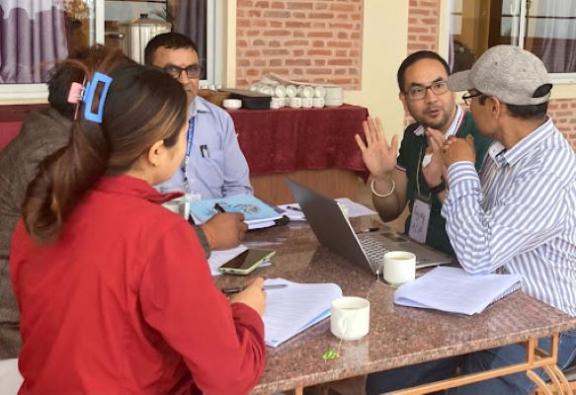
In Nepal, growth monitoring and promotion (GMP) is a national priority because of its potential to prevent malnutrition. But opportunities remain to increase attendance, simplify processes and train health workers to measure children routinely and tailor counseling appropriately. As the Ministry of Health and Population began to introduce a new national GMP guideline, key stakeholders gathered to learn about a tool that could help health workers catch and treat faltering growth.
To support health workers in implementing care protocols and providing high-quality services, USAID Advancing Nutrition has been developing a Guidance Package for Developing Digital Tracking and Decision Support Tools for GMP Services. Following several years of development, testing, and revision, the Guidance Package aims to help program managers and software development teams improve the quality of services in a way that aligns with current health information systems and global guidance.
In April, key stakeholders gathered to explore the process of developing DTDS tools to support GMP services in Nepal. The Nutrition Section of the Nepal Ministry of Health and Population (MoHP) hosted the interactive workshop with support from USAID Advancing Nutrition and Suaahara II, two USAID-funded projects.
Encouraged by opening remarks from key actors in Nepal’s nutrition and digital health communities, participants—representing the MoHP, United Nations agencies, nongovernmental organizations, and various levels of the health workforce—agreed that there could be value in developing DTDS tools for GMP services in Nepal and identified adaptations to the Guidance Package to make it more closely aligned with Nepal's existing GMP guidelines and workflows. Participants committed to forming a technical working group of key information technology experts; obtaining government approval to proceed with software development; and preparing a plan to develop, pre-test, pilot, and roll out a digital GMP tool.
The Government of Nepal is committed to continuing the process of developing and adapting DTDS tools for GMP. The process Nepal follows can serve as an example for other countries aiming to improve their GMP services in an innovative way.